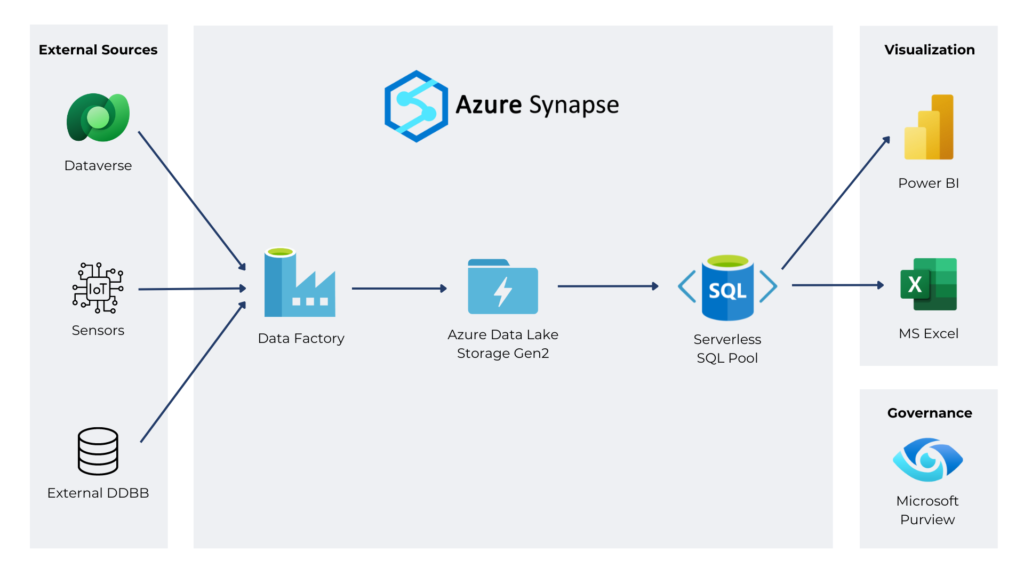Here’s the critical question: Should your business focus on transforming its data infrastructure with the latest solutions, or is it better to optimize and extract more value from the systems you already have? This article dives into the pros and cons of each approach, offering insights on when to implement cutting-edge data solutions like data warehouses, lakes, visualization tools, and automation platforms and when to just clean and revisit your existing spreadsheets logic. We’ll also explore a real-world case study where a company unlocked remarkable productivity gains using Microsoft’s data ecosystem, including Azure Synapse, Power BI, and other tools.
The Case for Transformation: Investing in New Data Solutions
Investing in new data infrastructure can be a game-changer. Here are the key advantages and disadvantages:
Advantages
- Scalability and Performance: Modern data platforms like Azure Synapse are built to handle large volumes of data with greater speed and efficiency. This is critical for companies looking to scale.
- Unified Data Ecosystem: New solutions offer seamless integration across tools, reducing silos and improving data accessibility for decision-making.
- Advanced Analytics Capabilities: From predictive analytics to machine learning, modern platforms offer advanced functionalities that can drive innovative use cases and unlock new revenue streams.
- Future-Proofing: Adopting the latest technologies ensures your business remains competitive in a rapidly evolving digital landscape.
Disadvantages
- High Initial Costs: Implementing a full-scale data transformation can be expensive, with costs including licensing, integration, and change management.
- Disruption and Resistance to Change: Shifting to a new platform can disrupt operations, leading to temporary declines in productivity and pushback from staff.
- Complexity and Time: Large-scale transformation projects can take months or even years to complete, introducing risks if not managed effectively.
The Case for Optimization: Getting the Most Out of Existing Systems
While transformation is enticing, there’s a strong case for optimizing existing data solutions:
Advantages
- Cost Efficiency: Optimizing current systems often requires a lower capital outlay, as it involves enhancing tools already in place rather than buying new ones.
- Faster Time to Value: Incremental improvements can deliver quick wins without the long timelines associated with major implementations.
- Minimal Disruption: Optimizing existing solutions typically involves less operational disruption, making it easier to maintain business continuity.
- Proven ROI: The existing system has already demonstrated value, and optimization builds on that foundation with less uncertainty.
Disadvantages
- Limited Scalability: Legacy systems may not be able to scale efficiently as your business grows, leading to performance bottlenecks.
- Missed Opportunities: Sticking with older systems might mean missing out on advanced analytics, automation, and AI capabilities that new platforms provide.
- Patchwork Solutions: Optimization can lead to fragmented ecosystems with multiple tools stitched together, making data governance and integration more complex.
- Technical Debt: Over time, continuously patching and upgrading older systems can create technical debt that becomes increasingly difficult to manage.
The Sweet Spot: Balancing Transformation and Optimization
For many organizations, the optimal strategy lies somewhere between wholesale transformation and minor optimization. A hybrid approach can deliver strategic gains while minimizing risks. For example:
- Incremental Transformation: Instead of a full-scale overhaul, prioritize key areas like data governance or analytics for early transformation.
- Pilot Programs: Run pilots on new tools while continuing to optimize current systems, allowing you to test ROI before making major investments.
- Phased Implementation: Transform critical functions (e.g., analytics) while optimizing non-critical operations to balance cost, time, and risk.
Case Study: How a Global Manufacturing Company Boosted Productivity with Microsoft’s Data Stack
The company had been using a legacy on-premises data warehouse and reporting tools that were becoming increasingly difficult to scale and maintain. They were at a crossroads: Should they fully transform their data infrastructure or stick with incremental optimizations?
The Challenge
The company was experiencing slow report generation, fragmented data silos, and limited analytics capabilities. The existing systems couldn’t handle the volume of real-time data needed for supply chain optimization and financial forecasting.
The Solution
After a thorough evaluation, the company chose a hybrid approach – optimizing key areas while also transforming parts of their data ecosystem. They implemented the following:
- Azure Data Lake Gen2: The company adopted Azure Data Lake Gen2 as the primary storage for all raw and semi-structured data. The data lake served as a centralized repository, capturing data from various sources like ERP systems, IoT devices, and third-party APIs.
- Azure Data Factory (ADF): ADF was implemented to handle complex ETL/ELT processes. Data from the lake was ingested, transformed, and loaded into downstream systems, including Azure Synapse Analytics. ADF enabled seamless data integration, bringing together data from various structured and unstructured sources.
- Azure Synapse Analytics: As the unified analytics platform, Synapse provided a robust environment for both data warehousing and big data analytics. Data processed by ADF was stored in Synapse, enabling advanced querying, reporting, and machine learning.
- Power BI: For enhanced data visualization and self-service reporting, Power BI was integrated into the solution. Business units now had direct access to interactive dashboards, reducing dependency on IT for generating insights.
- Power Automate: The company streamlined repetitive tasks and improved workflows with Power Automate, leading to significant time savings on manual processes.
- Microsoft Purview: Purview was implemented to improve data governance and compliance, offering centralized data lineage tracking and privacy controls across the organization.

The Results
Within 12 months, the company saw significant improvements:
- 50% Faster Data Processing and Integration: With the combination of Azure Data Lake Gen2, ADF, and Synapse, data processing times were reduced by 50%. Real-time data was more easily ingested and made available for analysis.
- 40% Faster Reporting: Thanks to Synapse’s real-time capabilities and the interactive dashboards in Power BI, financial and operational reports were generated 40% faster than before.
- 25% Improvement in Forecast Accuracy: Enhanced analytics allowed for more accurate demand and financial forecasting, leading to better decision-making.
- 30% Time Savings on Manual Processes: Automation through Power Automate reduced the burden of repetitive tasks, freeing up teams to focus on strategic initiatives.
- Improved Compliance and Data Governance: Microsoft Purview allowed the company to better manage data privacy requirements across regions, reducing compliance risk by 35%. Data lineage tracking and automated data classification ensured that sensitive data was adequately protected.
Strategic Impact
The phased approach allowed the company to quickly realize value in critical areas while laying the groundwork for more advanced capabilities in the future. By leveraging Microsoft’s integrated ecosystem, they future-proofed their data infrastructure while maintaining business continuity.
Conclusion: What’s the Right Approach for Your Business?
Deciding between transformation and optimization isn’t a one-size-fits-all decision. It requires evaluating your current infrastructure, growth goals, and risk tolerance. For many companies, a hybrid strategy—focused on key improvements while planning for long-term transformation—offers the best balance of agility and value.
At Ceteryx, we specialize in guiding businesses through these strategic decisions. Whether you’re looking to optimize your current setup or embark on a full transformation journey, our tailored solutions are designed to drive measurable business outcomes.






